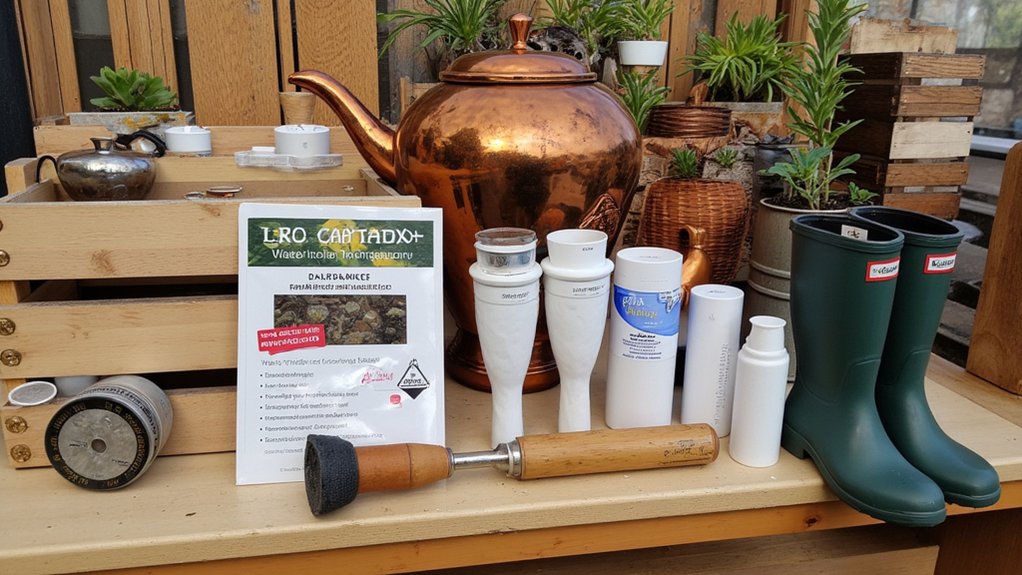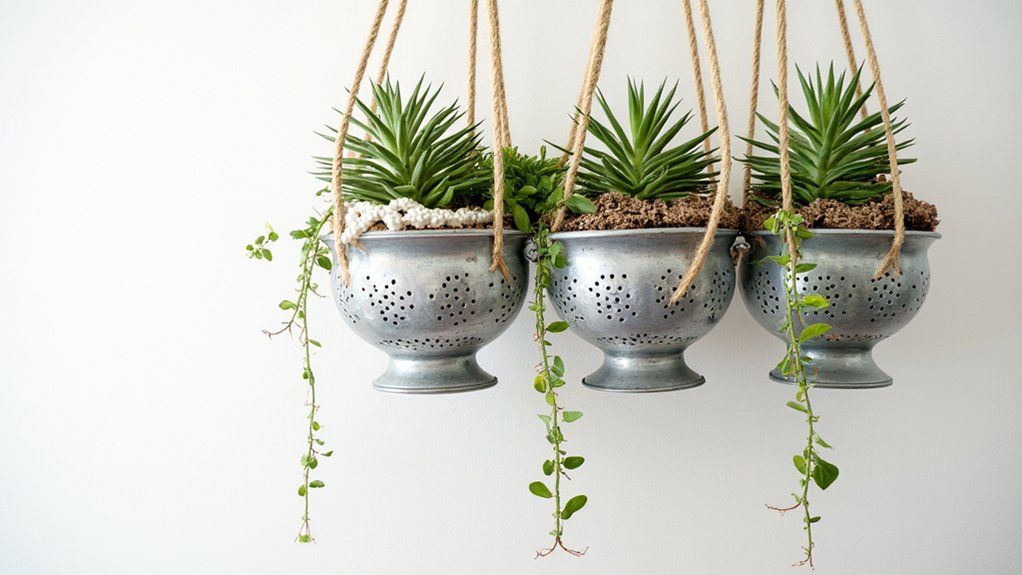Like Alice discovering wonderland in her garden, you’ll find that almost anything can become a creative home for plants. You don’t need conventional pots to create a thriving garden space – that old boot in your closet, the rusty wheelbarrow in your yard, or even your grandmother’s chipped teapot can transform into a unique growing vessel. Before you start filling random containers with soil, though, you’ll need to understand some essential principles about drainage and plant selection.
Contents
Essential Considerations Before Upcycling Containers

While it’s tempting to grab any interesting container for your gardening project, you’ll need to evaluate several critical factors before repurposing items as planters. First, verify your container has adequate drainage – you’ll need at least one 1/2-inch hole for every 12 square inches of surface area.
Check that your container isn’t made from materials that leach harmful chemicals. Avoid containers that previously held toxic substances, and steer clear of pressure-treated wood or certain plastics marked with recycling codes 3, 6, or 7.
Your container must also be sized appropriately for your chosen plant’s root system, providing at least 6-12 inches of soil depth for most herbs and vegetables.
Kitchen Items That Make Perfect Plant Homes

Once you start looking around your kitchen, you’ll discover countless items that can be transformed into charming planters. Old teapots, coffee mugs, and mason jars make excellent homes for small herbs and succulents, provided you add proper drainage holes using a ceramic drill bit.
Consider repurposing colanders and strainers, which already have built-in drainage. They’re perfect for growing shallow-rooted plants like lettuce or strawberries. Large cooking pots can house deeper-rooted vegetables, while vintage measuring cups work well for small cacti.
Remember to line metal containers with plastic to prevent rust, and always sanitize used kitchen items with a 1:10 bleach solution before planting.
Outdoor Treasures to Transform Into Gardens

The natural world outside your home holds endless potential for creative container gardening. Look for hollow logs, which you can transform by drilling 1-inch drainage holes every 6 inches along the bottom. Large rocks with natural depressions make excellent succulent gardens when filled with well-draining soil.
Don’t overlook fallen tree stumps, which you can hollow out using a 2-inch wood drill bit. Create a 6-inch deep cavity, line it with landscape fabric, and you’ve got a rustic planter that’ll last 3-5 years.
Old bird nests and driftwood pieces work well for miniature gardens, especially when you’re growing small ferns or moss varieties.
Preparing Unconventional Containers for Planting
Proper preparation of any unconventional container requires three essential steps before adding soil or plants. First, you’ll need to drill drainage holes in the bottom, spacing them 2-3 inches apart. For metal or ceramic items, use a specialized drill bit to prevent cracking.
Next, clean your container thoroughly with a 1:10 bleach solution, scrubbing away rust, dirt, or residue. Let it air dry for 24 hours. If you’re using wooden containers, seal the interior with non-toxic wood preservative to prevent rot.
Finally, line your container with landscape fabric, leaving 1-2 inches extending above the soil line to prevent erosion and maintain moisture levels.
Best Plants for Different Repurposed Containers
Selecting ideal plants for repurposed containers depends largely on your container’s size, depth, and material composition. For shallow vessels like old drawers or teacups (3-4 inches deep), choose succulents, herbs, or shallow-rooted flowers like pansies and sedums.
Mid-sized containers, such as recycled buckets or wooden crates with 6-12 inches of depth, work well for leafy greens, dwarf peppers, and compact flowers like marigolds. Your deeper containers, including old bathtubs or large barrels (12+ inches), can support tomatoes, climbing beans, and ornamental grasses.
Metal containers suit drought-tolerant plants, while porous materials like wood are perfect for moisture-loving species.
Creative Display Ideas for Unique Container Gardens
Creatively arranging your unique container gardens transforms ordinary spaces into eye-catching displays that maximize visual impact. Group containers in odd numbers, placing taller plants at 24-30 inches high in the back, with medium heights at 12-18 inches in the middle, and trailing varieties in front.
Create visual rhythm by repeating similar containers at 3-foot intervals along walkways or stairs. For vertical interest, mount containers on sturdy brackets at varying heights, spacing them 18 inches apart on walls or fences. You’ll need heavy-duty anchors rated for 1.5 times the weight of your fully watered containers.
